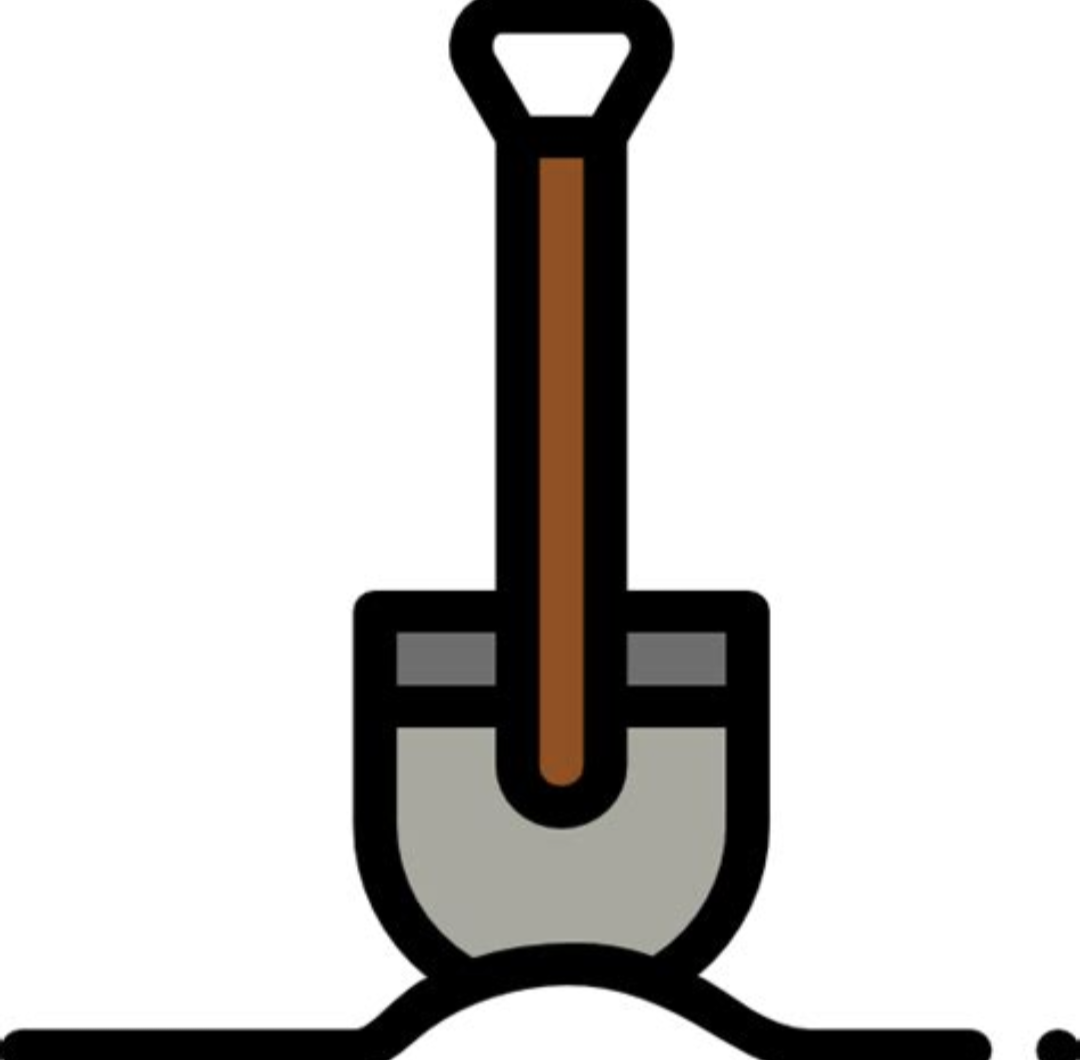I’ve been using HA for a while; having my home just “do things” for me without asking is fantastic. My lights turn on to exactly the levels I want when I enter a room, my grass and my plants get watered automatically, heating and cooling happens only when it needs to. There are lots of benefits. Plus, it’s just a fun hobby.
One thing I didn’t expect, though, is all the interesting things you can learn when you have sensors monitoring different aspects of you home or the environment.
- I can always tell when someone is playing games or streaming video (provided they’re transcoding the video) from one of my servers. There’s a very significant spike in temperature in my server room, not to mention the increased power draw.
- I have mmWave sensors in an out-building that randomly trigger at night, even though there’s nobody there. Mice, maybe?
- Outdoor temperatures always go up when it’s raining. It’s always felt this way, but now it’s confirmed.
- My electrical system always drops in voltage around 8AM. Power usage in my house remains constant, so maybe more demand on the grid when people are getting ready for work?
- I have a few different animals that like to visit my property. They set off my motion sensors, and my cameras catch them on video. Sometimes I give them names.
- A single person is enough to raise the temperature in an enclosed room. Spikes in temperature and humidity correspond with motion sensors being triggered.
- Watering a lawn takes a lot more water than you might expect. I didn’t realize just how much until I saw exactly how many gallons I was using. Fortunately, I irrigate with stored rain water, but it would make me think twice about wasting city water to maintain a lawn.
- Traditional tank-style water heaters waste a lot of heat. My utility closet with my water heater is always several degrees hotter than the surrounding space.
What have you discovered as a result of your home automation? While the things I mentioned might not be particular useful, they’re definitely interesting, at least to me.
OP’s post is a good lesson in the value of metadata and how important data privacy protections are.
The humidity in my apartment is affected far more by cooking than by showering.
Is it the food or just that your extractor fan is bringing in outside air? (Please tell me you cook with an extractor fan!)
I don’t have a fan, but I have a window near my stove. HA’s graphs let me compare the effect of opening the kitchen window by itself vs opening it while cooking, so I can isolate the effects.
While not publishing it, my weather station uploads my indoor temperatures to weather underground. The plaintext password is in every packet. It uses unencrypted HTTP.
My TV continues to chatter to random servers on the internet long after it has turned off. It transmits to a telemetry server on every single button press.
My air conditioners drain a lot more power when I haven’t cleaned the filters. It’s almost double.
A chromecast will try to bypass your router’s DNS and go straight to Google’s. It is constantly pulling data even if you’re not using it. I’m fairly certain it’s that slideshow. It’s not cached at all.
My TV continues to chatter to random servers on the internet long after it has turned off. It transmits to a telemetry server on every single button press.
What’s even more irritating to me are the random changes to the TV’s UI. Turn it off for a while and I come back to an entire new set of menu entries and ads!
Home Assistant, OpenWRT and Adguard Home mostly fix those problems.
When my TVs are powered off a Home Assistant automation enables a couple of OpenWRT firewall rules. Those rules block all TV Internet access. When the TVs are powered on the firewall rules are automatically disabled and the TVs work normally. That along with Adguard Home’s blocking of all UI ads makes my TVs almost user friendly.
That’s a neat rule. Thanks for sharing!
Couldn’t you achieve the same effect by just having a PiHole?
Adguard Home is a Pi-Hole competitor. They work fine for ad servers, but the content I was trying to reduce couldn’t be blocked that way or the TV’s wouldn’t work. Menu changes were being loaded while the set was off and Roku was inserting some ad content along with menu changes.
To my surprise this setup has reduced menu additions and ads to almost nothing. It seems that these menus aren’t updated when my TV’s are actually in use and that’s now the only time they can connect to the Internet.
Onkyo home cinema amp was eating 50W when being “off”.
Fixed it with smart multi-plug which power the amp when the tv is on, and cut power when tv is off.I had similar experience with my onkyo. It was ocuuring only when set in a “special” mode of being a mutimedia center of the whole living room - the mode where all the video and audio inputs go to it and it handles them and forwards the video output to the TV. I disabled it and instead connected all the inputs to the TV itself and forwarded audio only to the amp. This drastically decreased the standby usage. Maybe it applies to your situation too. Anyway, I am pretty sure draw this big in the standby is illegal in the EU.
I have too much HDMIs to plug everything in the TV.
Between the ISP TV Box, PC, Raspberry Pi, Game Console, DVD players.
I’ve caught the front door and garage door left open several times (kids)
I found out my garage under my bedroom is primarily why my room is hard to heat and likely has poor insulation in the ceiling.
I found out my Samsung TV was sending a LOT of data home.
I know every time my Roomba gets stuck so I can go and locate it before the battery dies.
I know when my unraid Dockers fail to update and accidentally delete the old containers, so that I can go and re-add them.
One of my children were doing remote learning and I would get an alarm if he didn’t get up in the morning and start using his Chromebook.
How much data is a lot? Mine lost wifi privileges for putting ads in my stuff, but I’m still curious.
It was burning a few gigs a day. Which wouldn’t have been noticed except I wasn’t using it to stream anything. I originally put it on the time out vlan, But my wife wanted to make changes to art mode, and of course that requires cloud connection. I should probably go back and isolate what it talks to and see if I can get art mode to continue working without letting it do whatever high bandwidth application it was trying to do before.
That’s nuts, good luck with the sluething
Do you have some sort of notification for the docker fail one? I’m currently just periodically visiting the previous apps page in the Apps tab, but that’s annoying and manual.
Right now I’m using uptimekuma, It writes to a private telegram group I set up just for alarms.
I also have set up some user scripts that do curl calls to write to telegram on certain system conditions, like when I add a file to IPFS.
My electrical system always drops in voltage around 8AM. Power usage in my house remains constant, so maybe more demand on the grid when people are getting ready for work?
If it turns into a problem I wonder if you report that to your power provider they can investigate it. I assume it isn’t much of a drop though 240v to 210v ish drop.
We had a UPS that would report under voltage every winter at a remote radio tower. We sent the info to the power company and a few months later found the issue and we never got an alert again.
I assume it isn’t much of a drop though 240v to 210v ish drop.
If you had that big of a drop, it would likely have already caused the local power grid to trip and turn off. That hardware is not designed to run at a very large frequency differential from normal, and while 30v might not sound like a lot, it’s still enough to massively change the Hz of the AC.
A voltage change on the consumer side means increased current through a resistance somewhere in the line… Something undersized or overloaded, or a bad connection, for that kind of voltage drop.
Still, that should not change the AC frequency of the grid significantly in this case… You’re never going to have a different frequency than the power plants. They’re all sync’d and the entire grid would go down if the frequency changes too much.
My old furnace was hilariously oversized for the house.
One of the nifty things about smart thermostats like Ecobees is that you can pull usage data from their web portal. I grabbed a CSV file covering a cold snap last year that reached a 100-year record low, and using Excel I summed up the total heat output while we were at that low.
The furnace was only running 50% of the time, even when it was with a couple degrees of as cold as it’s ever been where I live.
Needless to say, when I got a new system installed I made sure it was more properly sized, and given that I had a convenient empirical measurement of exactly how many btus I actually needed in the worst case as scenario, that was easily done.
Having an oversized furnace really isn’t a bad thing, and only having it run half the time sounds like a good thing to me.
A little headroom ain’t bad, but it had three times the required heating capacity for my area’s “design day” low, which meant that for most of the winter it was kicking on for maybe 5-10 minutes per hour and then leaving massive cold spots in the house, because the thermostat was smack in the middle and all the walls were bleeding heat.
My new heat pump is just about 2x the design day heat requirement, but that also means it’s got capacity to handle extreme lows without resorting to resistance heat, and in any case it’s fully modulating so the house has stayed quite comfortable so far.
One of the nifty things about smart thermostats like Ecobees is that you can pull usage data from their web portal.
Ecobee also let’s you connect over HomeKit and allows you to control when the internet is out 😉at my old house I actually blocked the mac address for non internal and just had HA automatons take care of the rest.
I actually blocked the mac address for non internal and just had HA automatons take care of the rest.
Can you explain this? Not sure why but I cannot parse that sentence. You blocked external Mac addresses?
Not OP, but I believe he means he restricted outside internet access to that device (restricted communications to the thermostats MAC address to other internal devices)
I tend to post then disappear lol but what the other person said: at the router level, I added a rule specifically to block a given list of MAC addresses. That included IP cams & the ecobee, then had HA act on data from other sources to adjust temperature.
The one I was proud of was 433mhz door and window sensors that, if opened for too long, would turn off the heat / air and just leave a fan on.
Minor and obvious thing, but seeing it plotted finally made me recognize it: the temperature on my balcony is consistently lower than temperature inside my fridge for a good part of the year.
A friend in HVAC told me each person produces 350 btu of heat on average
Yes, but that is a person at rest. They generate more heat if they are active. Useful if you’re planning the heating needs for movie theater as compared to an exercise studio.
I have a Dyson smart air purifier / heater combo in my room. It has a mostly real time app that shows whether the air is healthy or unhealthy. One night I was laying in bed and felt some gargantuan ass thunder brewing, so I aimed my cheeks toward the Dyson and watched gleefully as my air quality went from green to red. Technology is amazing.
Probably the most surprising thing I discovered with Home Assistant was the amount of electricity used by our washing machine in the supplied one in our rental. I hooked up a Kuaf Energy monitoring plug (PLF12) and was able to track each cycle by measuring the power draw. Something like this:
Fill 6.00 - 7.00 W Wash 493.5 -788.5W Drain 405-450W Spin 8.0 8.84 A + 498-800W
These are my rough notes and observations, I’m planning on creating an automation to indicate on our dashboard the current state of the washer making it a tad smarter. :) Also to alert us that it’s finished!
The other one I discovered was the amount of energy the Dishwasher pulls. . It’s a complex power draw and I’ve only managed to get our dashboard to show it’s running successfully. There is a huge variance in the power draws, that sometimes, I found that if it jumped by a volt or two, it would falsely say it’s in the second rinse cycle when it’s really filling the basin. Nonetheless, it was surprising to see how much less energy I thought the were using was.
I put a 4-1 one Zooz sensor up above the hall pointing at our front door, so it captures every entry point into our upstairs apartment. When I first set it up, it was a bit unsettling to have it detect even the smallest movement, eventually some adjustments were made and it’s more refined and not so trigger happy.
The biggest metric I discovered is just how humid our place gets! As a direct result, I bought a dehumidifier which we run year round. Living in the Pacific NW makes managing humidity challenging. (You know the old jokes about it being rainy all the time, yeah…it sort of is) As a result, we have a dehumidifier which runs year round almost non-stop. Not so much in the summer months. While most people buy a humidifier for the winter, we run it more in the winter as it’s too cold to exchange the outside air with the in which can lower it down to as low as 10-15% in the summer. We learned our comfort levels to be around 45-50% instead of the 75-80% it was before we bought the dehumidifier.
We are planning on relocating sometime this year to the other end of our state which is a different climate, so it will be a new discovery period of temps and humidity for us, for this, Home Assistant will be coming along for the ride! :)
- My TV’s power consumption is basically doubled when the input is running at 2160p compared to 1080p.
- Running the portable AC in my office for more than 24 hours causes it to cycle off and on because the humidity collection sump fills up and needs to be emptied (it throws a completely unhelpful error of ‘Low Temperature’).
So 4K is more efficient $/pixel then
That’s really interesting with your TV. I would actually expect power consumption to increase with 1080p since it’s having to upsample the input to match your native resolution. Unless you’re playing 4k content on a 1080p panel, in which case it makes more sense.
It’s a Sony 65” 2019 4K LCD panel.
2160p registers ~200W, 1080p ~100W.
The measured 2160p feed is from a 2017 Apple TV 4K, 1080p from a docked Nintendo Switch.
I learned my air filter uses almost no electricity so I just leave it running 24/7 now.
My office electric space heater, on low, uses more energy than our pellet stove.
My server (and network gear) also use slightly more energy than the pellet stove.
The pellet stove’s energy usage does not seem to be drastically affected by the setting it’s on - this winter I’ve been keeping it on setting 2 (of 5), but the other day I ran it at 4 for a few hours. No distinguishable change in electricity usage during that time.
Wait, doesn’t a pellet stove produce heat by burning pellets? I’d figure the electricity use would be similar to a gas furnace, where it’s just running sensors and cycling it on or off.
Don’t you have to buy pellets and maybe even load them into the stove, depending on what kind of delivery system/hopper your stove uses?
Yes to all of that, except for the comparison to the gas furnace: I don’t know how much electricity they use (I know some, because our previous house had one, but it’s not a ton - electronics, igniter, and blower fan).
Yes, I do have to buy pellets and load them into the stove; I like to say the stove warms me up multiple times: Loading the pellets into our pickup, unloading them and stacking them in the garage, moving the bags from the garage to the stove (okay, this is not that hard and doesn’t warm me very much), and then when the pellets finally get burned. They’re 40 lb bags, not terrible but some work to move. (On reddit, at this point, I’m sure someone would jump in and call me a wimp or whatever, but having stacked a ton of them alone multiple times, it definitely adds up.)
The stove has two motors in it, I believe: an auger to lift the pellets from the hopper and drop them into the burn pot, and a blower fan for the draft for the fire. There may be a third fan to circulate warm air across the heat exchanger tubes as well, but I don’t remember for certain. There’s also an electronic board to control on/off, heat level, when to run the auger, etc.
My comment above was noticing that the power it consumes isn’t very different on different levels - which isn’t surprising, the fan runs a bit faster and the auger has to turn a bit more often, but it wasn’t an obvious difference over a few hours. I have it on a power monitoring plug to detect if it’s running (for automations like turning on a ceiling fan to help circulate the warm air, and keeping track of run time so I know when I need to clean it). I’ll have to test different levels to see if I can find a way to detect which level it’s set on.
Ah I see what you mean, my mind interpreted what you were implying in a completely different direction from what you intended.
Which makes me realize I had missed on a big part of home automation by not realizing you don’t need to have direct communication with the appliances for an automated home.
I need to look in to smart water flow meters and maybe I’ll be able to implement one thing that’s been kinda a pain here: needing to manually check the water softener level to tell if I should cycle it before running the dishwasher or washing machine. I also need to move things to get into the utility closet, so it’s a pain. Instead I could measure the flow to know how much is left and reset it when the softener draws more power for its regen cycle. And then have something check it and send an alert any time either of those water using appliances draw more power than idle if soft water available is less than a threshold.
Also, for your problem, I’m assuming now that the intention is to turn up the ceiling fan if the stove is at a higher level? Or something to do with circulating air based on that? If so, what about using temperature sensors and the difference between them? I think that would end up being more efficient and effective than just going by the stove setting, since you don’t need high fan as the stove warms up and might still want the fan going after it shuts down.
Or if you want to know for some other reason (pellet use tracking?), you could combine temperate differential with current fan settings and calculate a rough estimate of how much thermal energy it’s putting out.
The fan just turns on low when the pellet stove is running, nothing so fancy as changing the speeds based on the stove setting. But that could be accomplished indirectly by just looking at the temperature in the area - if it’s a few degrees higher than, say, the living room, turn up the fan speed.
In an ideal world I’d be able to control the setting on the stove remotely - there’s a button to change the setting, which a switchbot could theoretically do. Of course to do that reliably, HA should know what the current setting is. I haven’t really looked into this much.
But, yeah, I do wish I had a way to track the pellet level to alert me when it’s getting low. I have a Salt Sentry to monitor the salt in the water softener, with a gauge in HA, and it warns me when it’s getting low. Which is great (when it works, sometimes it stops responding). I’m not sure if it would work as well for the pellets - the pellets would be right up against the sensor when it’s full. Another option might be a weight sensor under a leg - I have no idea if this is even feasible, but if is, it should be able to detect the 40 lbs change (noting that there’s some ash left in the stove, so the 40 lbs doesn’t completely disappear).
I use the power monitoring plug for a lamp in the living room that is dumb, but it has a 433 mhz remote. The power monitoring detects whether it is on or not. I have one of those Sonoff 433 mhz transmitters, so with the power monitoring plug I can control the light. This also means it can be part of my “vacation” mode where it perhaps turns on at some point in the evening, then turns back off. Also, it turns on when first connected to power, so I can do an automation that sends the “off” command at night if the house is in Vacation mode and the light is on.
I don’t really have it set up yet, but in theory the power monitoring plugs could warn me if the freezer stops working (or is running constantly), the sump pump stops working, etc. I have the power monitoring in place, but not the automations to detect issues.
The biggest one was probably a combo of having an anemometer, and heat/humidity sensors in each room.
When it’s cold outside, the top floor of the house (loft conversion) loses more heat. But it loses significantly more heat when it’s cold, and the wind is blowing parallel to the floor joists.
I realised that because they’re not perfectly sealed (old house), enough air pressure means that the floor void can easily hit external temperatures, meaning the rooms have cold on twice as many sides.
I will (eventually) get some suitable insulation in them to stop this.










